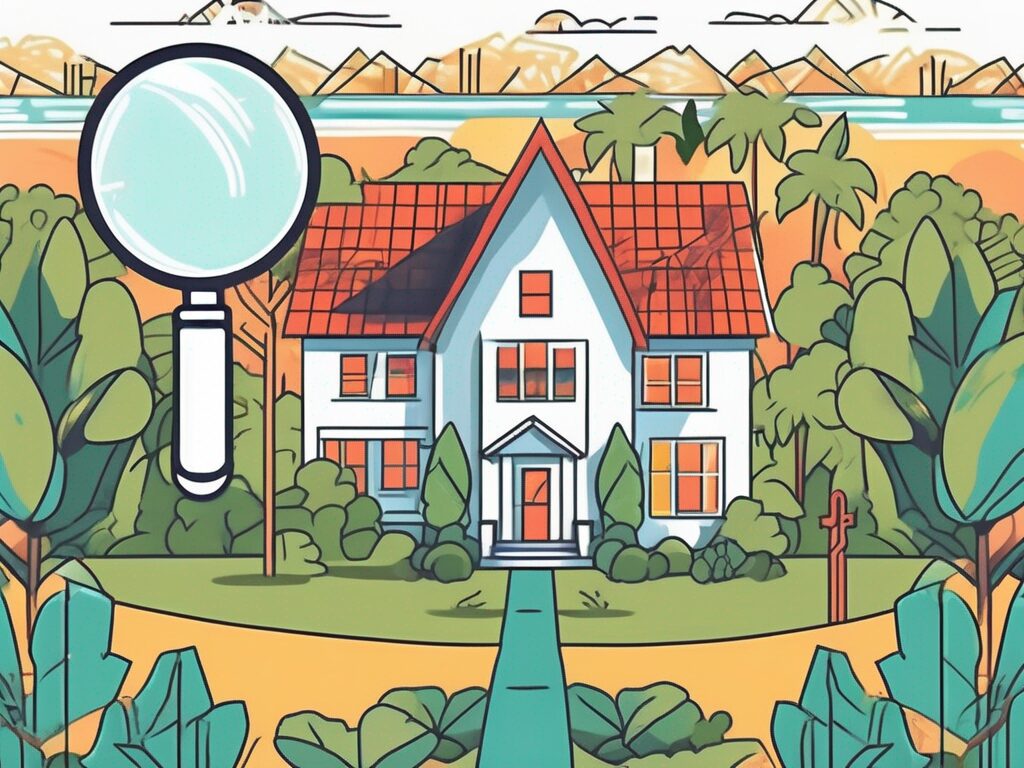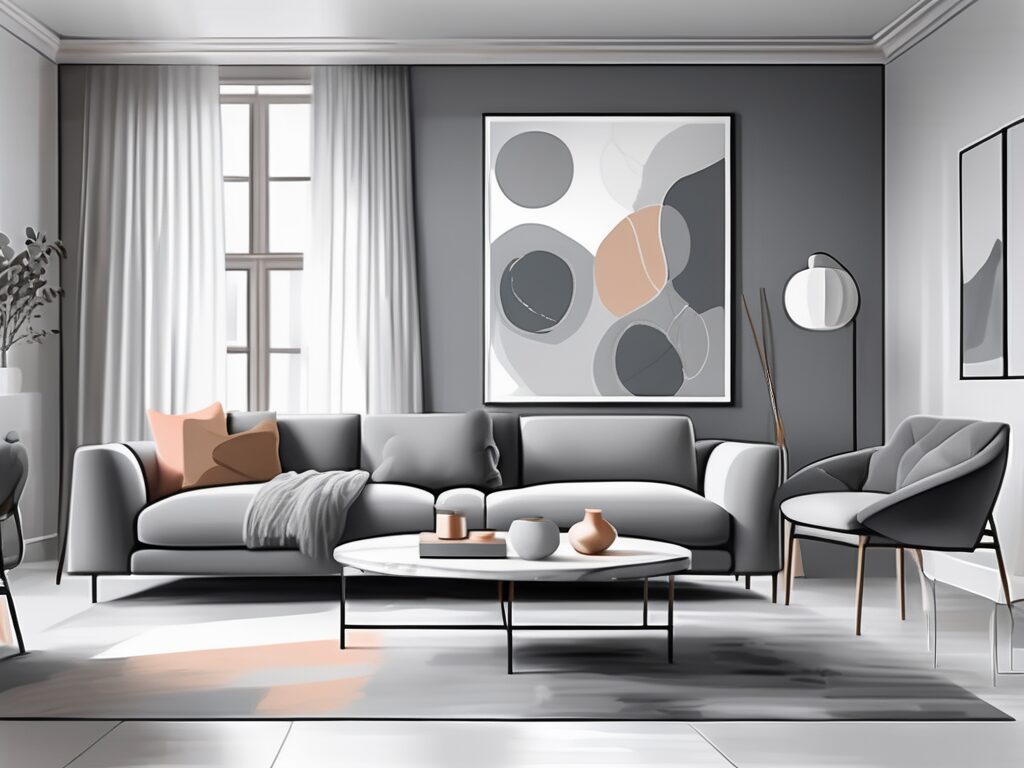
Agent A-Team or Solo Superhero? Finding the Right Real Estate Partner for Your Selling Journey in Wildwood Florida
When it comes to selling your home in Wildwood, Florida,…
January 29, 2024
Gray has long been a popular choice for interior design, known for its versatility and ability to create a calming, sophisticated atmosphere. However, trends in the design world are constantly evolving, and it begs the question: Is gray paint still trendy? In this article, we will delve into the future of interior design colors, exploring the decline of gray, the evolution of color palettes, the wide range of gray shades available, and innovative ways to incorporate gray into your home decor.
Gray has been a dominant color in interior design for many years, but recently, its popularity has shown signs of decline. As new color trends emerge, homeowners and designers are starting to explore bolder and more vibrant hues. However, this doesn’t mean that gray is completely going out of style. It is simply taking on a different role in the world of interior design.
While gray has been a go-to choice for many homeowners, there are several factors contributing to its decline. One reason is the desire for more personalized and unique spaces. Gray can sometimes be seen as too neutral or safe, lacking the boldness and personality that many homeowners now crave. Additionally, the rise of biophilic design and the incorporation of natural elements into interiors has shifted the focus away from cool gray tones towards warmer, earthy colors.
As homeowners seek to create spaces that reflect their individuality, gray is being replaced by colors that evoke specific emotions and moods. For example, vibrant blues and greens are being used to create a sense of calm and tranquility, while bold yellows and oranges are being incorporated to add energy and excitement. These colors not only make a statement but also allow homeowners to express their unique personalities.
Furthermore, the decline of gray in interior design can also be attributed to the growing interest in sustainable and eco-friendly materials. As people become more conscious of their environmental impact, they are opting for natural materials such as wood, stone, and bamboo. These materials often have warm, earthy tones that complement the desire for a more organic and nature-inspired aesthetic. Gray, with its cool and industrial connotations, is being replaced by these warmer and more sustainable alternatives.
Another factor contributing to the decline of gray is the shift towards maximalism in interior design. While minimalism and monochromatic color schemes were once popular, homeowners are now embracing a more eclectic and layered approach. This means incorporating a variety of colors, patterns, and textures into a space. Gray, with its understated and subdued nature, may not be able to compete with the vibrancy and visual interest that other colors bring to a room.
However, it is important to note that gray still has its place in interior design. Its versatility allows it to serve as a neutral backdrop for more vibrant elements in a space. It can be used to create a sense of balance and harmony, especially when paired with contrasting colors. Additionally, gray can be a timeless and classic choice, particularly in more traditional or minimalist design styles.
In conclusion, while gray may be experiencing a decline in popularity, it is not completely going out of style. It is simply evolving and taking on a different role in the world of interior design. As homeowners and designers continue to explore new color trends and experiment with different styles, gray will always have its place as a versatile and timeless option.
The world of paint trends is a fascinating one, with colors coming in and out of favor over time. To understand the future of interior design colors, it’s important to take a look back at the evolution of color palettes in home decor.
In the past, color palettes in home decor were heavily influenced by social, cultural, and technological factors. From the earthy tones of the 70s to the bold and vibrant hues of the 80s, color trends have always reflected the spirit of the times. Today, we see a shift towards more mindful and sustainable design, with nature-inspired colors taking center stage.
In the 1970s, the world of interior design saw a surge in popularity for earthy tones. This was a time of embracing nature and bringing its warmth and comfort into the home. Colors like olive green, burnt orange, and mustard yellow were commonly used to create a cozy and inviting atmosphere. These earthy tones were often paired with natural materials such as wood and stone, further enhancing the connection to the natural world.
The 1980s marked a dramatic shift in color palettes, as bold and vibrant hues took center stage. This was a decade of excess and self-expression, and the colors used in home decor reflected this spirit. Bright pinks, electric blues, and neon greens were popular choices, adding a sense of energy and excitement to living spaces. These vibrant colors were often paired with metallic accents and glossy finishes, creating a glamorous and futuristic look.
As we entered the 21st century, there was a growing awareness of the impact our choices have on the environment. This led to a shift towards more mindful and sustainable design practices, including the use of nature-inspired colors. Today, we see a resurgence of earthy tones, but with a modern twist. Soft greens, warm browns, and calming blues are now being used to create a sense of tranquility and harmony in our homes. These colors evoke a connection to nature and promote a sense of well-being.
In addition to nature-inspired colors, there is also a growing trend towards using neutral tones in home decor. Shades of white, beige, and gray have become popular choices for creating a clean and minimalist look. These neutral colors provide a versatile backdrop for other design elements and allow for easy customization and personalization.
Looking to the future, it’s clear that color trends in home decor will continue to evolve and adapt to the changing needs and preferences of society. Whether it’s a return to bold and vibrant hues or a continued focus on mindful and sustainable design, one thing is certain: the world of paint trends will always be an exciting and dynamic realm to explore.
While gray may be undergoing a transformation in its role within interior design, it still offers a wealth of possibilities when it comes to paint choices. Let’s dive into the vast world of gray shades and discover how they can elevate your home.
Gray, often associated with neutrality and sophistication, has become a popular choice for homeowners looking to create a modern and elegant atmosphere. But did you know that gray is not just a single color? It encompasses a wide range of shades, each with its own unique characteristics and appeal.
Gray is far from being a one-size-fits-all color. From cool grays with blue undertones to warm grays with hints of beige, there is a gray shade suitable for every style and preference. When choosing a gray paint, consider the natural light in your space, the mood you want to create, and the overall aesthetics of your home.
Let’s start with cool grays. These shades have a touch of blue in them, giving them a crisp and refreshing feel. They are perfect for creating a modern and minimalist look, especially in rooms with ample natural light. Cool grays can make a space feel airy and open, making them an excellent choice for small rooms or areas that lack natural light.
On the other end of the spectrum, we have warm grays. These shades have undertones of beige or brown, adding warmth and coziness to a room. Warm grays are ideal for creating a welcoming and inviting atmosphere, perfect for living rooms or bedrooms where you want to create a sense of comfort and relaxation.
But what about the undertones? Gray shades can also have undertones of green, purple, or even pink. These subtle undertones can add depth and complexity to the color, making it more visually interesting. For example, a gray with a hint of green can create a calming and serene ambiance, while a gray with a touch of purple can add a touch of luxury and sophistication.
When choosing a gray paint, it’s essential to consider the overall aesthetics of your home. If you have a modern and sleek interior, you may opt for a cool gray with clean lines and a minimalist vibe. On the other hand, if your home has a more traditional or rustic style, a warm gray with earthy undertones can complement the existing decor beautifully.
Remember, gray is not just a backdrop color. It can be the star of the show, adding depth and character to your space. Don’t be afraid to experiment with different shades and undertones to find the perfect gray that speaks to your style and personality.
The popularity of gray in interior design can vary significantly from region to region. Let’s take a closer look at how different areas embrace gray in their design choices.
In some regions, like Scandinavia, gray is still highly sought after, complementing the minimalist and functional design aesthetic. The use of gray in Scandinavian interior design reflects the region’s appreciation for simplicity, clean lines, and natural materials. Gray walls provide a neutral backdrop that allows furniture and decor to stand out, creating a harmonious and serene atmosphere in the home.
In warmer climates, however, homeowners often opt for lighter shades of gray to create a sense of coolness in their homes. Light gray tones, such as dove gray or silver gray, are popular choices in regions with hot and sunny weather. These lighter shades help to reflect sunlight, making the space feel brighter and cooler. Additionally, lighter grays can also make a room appear larger and more spacious, which is especially beneficial in smaller homes or apartments.
On the other hand, in regions with cooler climates, darker shades of gray are often favored. Charcoal gray or slate gray can add depth and warmth to a space, creating a cozy and inviting atmosphere. These deeper shades of gray work well in rooms with ample natural light or in areas where the use of artificial lighting can enhance the richness of the color.
Understanding how different regions incorporate gray into their interiors can provide valuable insights for your own design choices. Whether you prefer the simplicity of Scandinavian design or the coolness of lighter grays in warmer climates, there are endless possibilities to explore when it comes to incorporating gray into your home.
While gray may not be the most cutting-edge color choice at the moment, it should not be overlooked for its versatility and ability to serve as a canvas for creativity.
Gray, often associated with neutrality and simplicity, has the power to transform any space into a captivating and visually appealing environment. Its understated elegance and timeless charm make it a popular choice for interior designers and homeowners alike.
One innovative way to use gray is as a backdrop for pops of color. By incorporating bold accessories, artwork, or furniture in vibrant hues, you can create a dynamic and visually striking space. Imagine a living room with a sleek gray sofa adorned with bright orange throw pillows, complemented by a vibrant abstract painting hanging on the wall. The gray acts as a neutral base, allowing the colors to take center stage and create a lively atmosphere.
Another creative approach is to experiment with textures and patterns, such as using different shades of gray tiles to create an eye-catching mosaic effect. Picture a bathroom with a shower wall covered in small gray tiles of varying shades, forming an intricate pattern that adds depth and visual interest to the space. The play of light and shadow on the textured surface creates a captivating visual experience.
Gray can also be used to create distinctive design features. From accent walls to painted ceilings, incorporating gray in unexpected ways can add depth and interest to your space. Imagine a bedroom with a striking gray accent wall behind the bed, adorned with a large abstract artwork. The gray wall serves as a bold statement piece, creating a focal point that draws the eye and sets the tone for the entire room.
Additionally, gray can serve as a bridge between different design styles, seamlessly blending modern and traditional elements. Picture a dining room with a classic wooden table and chairs, paired with sleek gray pendant lights hanging above. The combination of the warm wood tones and the cool gray hues creates a harmonious balance, resulting in a space that is both inviting and contemporary.
When it comes to incorporating gray in interior design, the possibilities are endless. Whether you choose to use it as a neutral backdrop or as a statement color, gray has the ability to elevate any space and unleash your creativity. So, next time you consider your color options, don’t underestimate the power of gray.
When working with gray paint, understanding the concept of undertones is crucial. Undertones can greatly impact the overall look and feel of the color, making it essential to choose the right shade for your space.
Gray paint can have undertones of blue, green, purple, or brown, among others. These undertones can alter the perceived color of the gray and interact with the surrounding elements in your space. It’s important to test your chosen gray paint in different lighting conditions to ensure that its undertones harmonize with your design scheme.
Gray is a versatile color that pairs well with a wide range of other shades. By mastering the art of mixing and matching grays, you can create harmonious and visually appealing color schemes.
When combining different shades of gray, consider the undertones and the desired mood of your space. You can create depth by using light and dark grays together, or achieve a monochromatic look by sticking to variations of the same shade. Experimenting with different combinations will help you find the perfect balance for your home.
Choosing the perfect gray paint can be a challenging task. That’s where the expertise of a color consultant comes in.
A color consultant can guide you through the vast array of gray shades available, helping you find the one that best suits your space, lighting conditions, and personal preferences. They can also provide valuable insights into current color trends and help you create a cohesive color palette throughout your home.
In conclusion, while gray may be experiencing a decline in popularity, it still has a place in the future of interior design colors. Understanding the evolving role of gray, exploring its wide range of shades, and thinking creatively with this versatile color can help you create a stylish and unique home. Whether you choose to embrace the trendy colors of the moment or stick with the timeless appeal of gray, the key is to create a space that reflects your personality and brings you joy.

If you want the Richr team to help you save thousands on your home just book a call.
 Book a call
Book a call